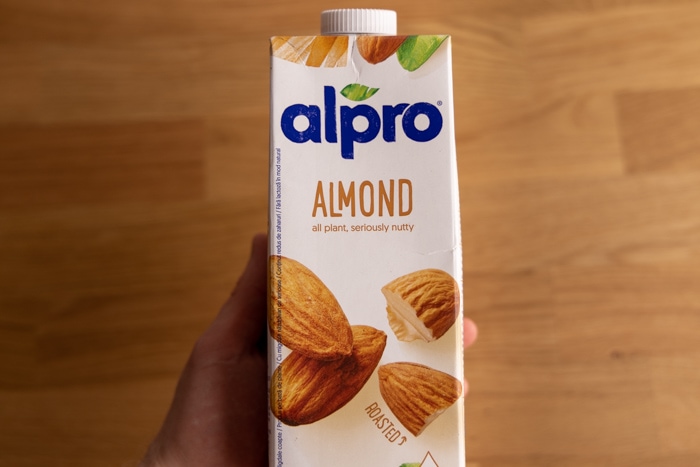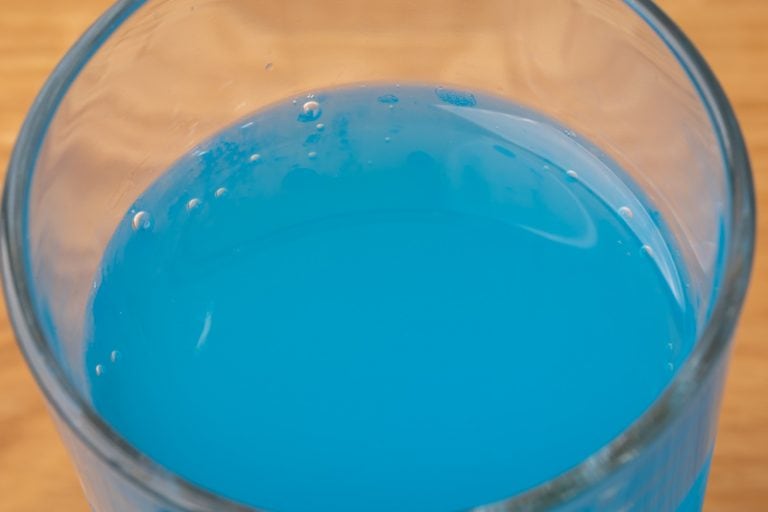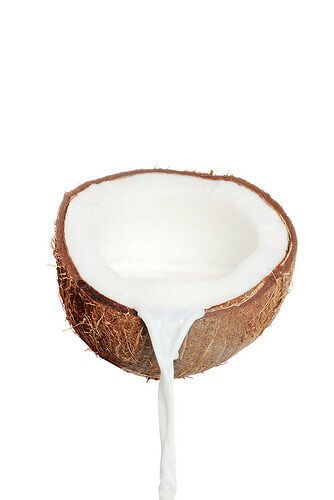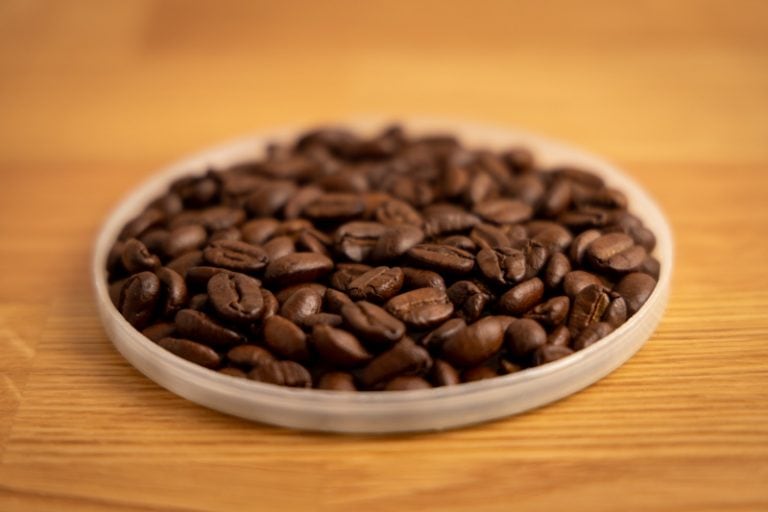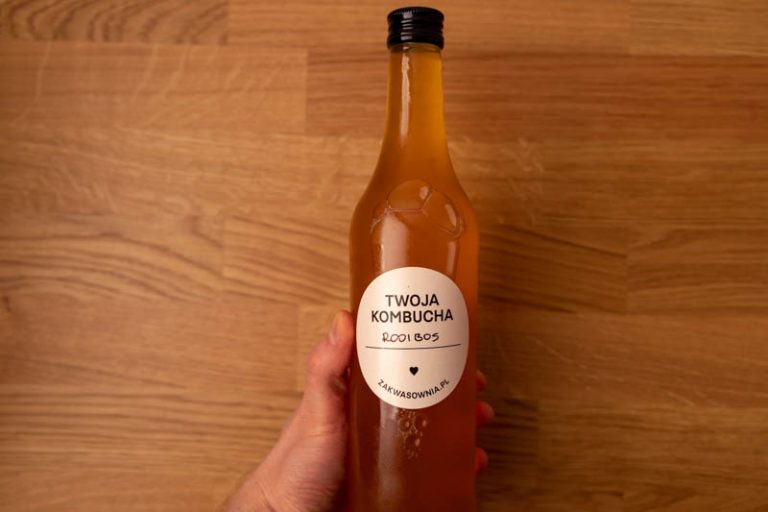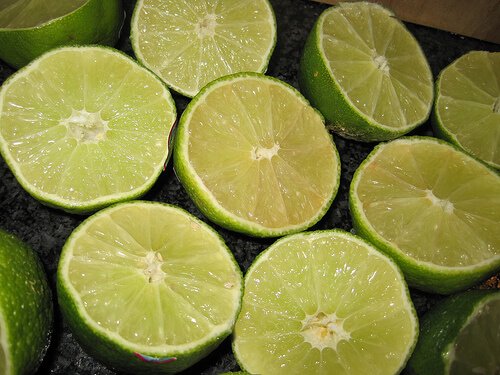How Long Does Oat Milk Last and How to Tell if It’s Bad?
Oat milk in the fridge got you second-guessing? Or not sure if you should refrigerate it in the first place?
Learn all about how long oat milk lasts, what’s the proper way to store it, and how to tell if this non-dairy drink is bad.
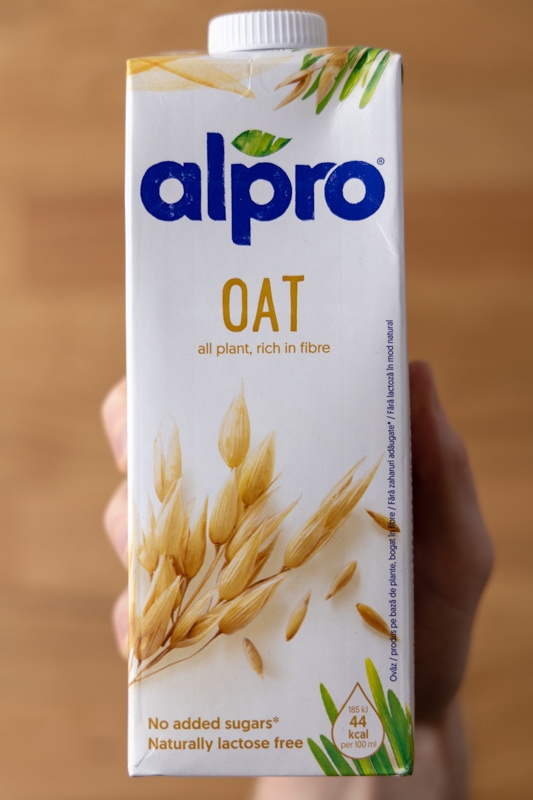
How Long Does Oat Milk Last?
| Pantry | Fridge | |
|---|---|---|
| Oat milk (shelf-stable) | Best-by + 3 – 6 months | |
| Oat milk (chilled carton) | Use-by + 5 – 7 days | |
| Oat milk (opened) | 7 – 10 days |
Unopened shelf-stable oat milk typically lasts for 3 to 6 months past its date, while unopened refrigerated oat milk (the one in the chilled section) keeps for only about a week beyond the use-by date.
Once you open your carton or bottle of oat milk, you should refrigerate it and use it within 7 to 10 days.
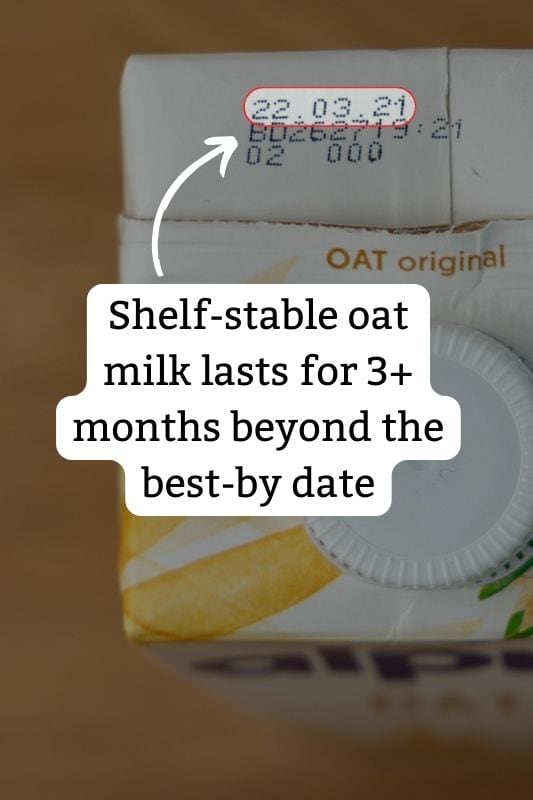
Knowing that, how do you deal with a bottle of oat milk that’s expired?
Expired Oat Milk
Shelf-stable oat milk typically has a shelf life of 12+ months and easily keeps for a couple of months past its date as long as it’s unopened. So if yours is shelf-stable, chances are it’ll be fine even if it’s half a year past its date (or more).
(Just make sure to check for signs of spoilage before you use it.)
As for refrigerated oat milk, it comes with a use-by date that’s only a couple of weeks from the production and keeps for a much shorter period, like a week or so beyond its date.
Because of that, I suggest you toss it if it’s more than 2 weeks past its date, just to be safe.
(Not sure about differences between shelf-stable and refrigerated variety? I cover those in the section on refrigeration.)
After Opening
Open oat milk typically keeps in the fridge for about 7 to 10 days after first opening the carton or bottle. The recommendations vary a bit between brands, but if you finish yours within 4 to 5 days, you’ll be in the clear no matter the brand you choose.
Want examples? Tōats brand suggests shorter storage times (4 to 7 days), while Oatsome recommends using their oat milk within 7 to 10 days of opening.
The reality is, it’s mainly about the quality of the dairy-free drink, and probably all various oat milks available should taste quite okay around the 7-day mark.
Write the day you opened the carton on the bottle to easily keep track of how long it’s open.
Last but not least, if yours is open for like two weeks or so, you should discard it even if it doesn’t show any spoilage signs. That said …
Beyond 2 Weeks of Opening
Some folks, like a user named “obfuscation” on the Ask MetaFilter forum, often sail smoothly past those recommended periods without a hitch.
“I use more soy milk than oat,” obfuscation shares, “but for any plant milk, I almost never use it all within 10 days, probably up to 3 weeks is normal, and I have never had an issue with it going off.”
The secret? Keeping things squeaky clean. Obfuscation advises, “Make sure you’re being sanitary with the container – obviously don’t drink from the spout, but even avoid touching it with your hands, to limit bacteria that makes its way back in.” (Emphasis mine)
So, while sticking to the guidelines is a safe bet, if you’re venturing beyond, make sure your milk passes the sight and smell test, and always handle it with care.
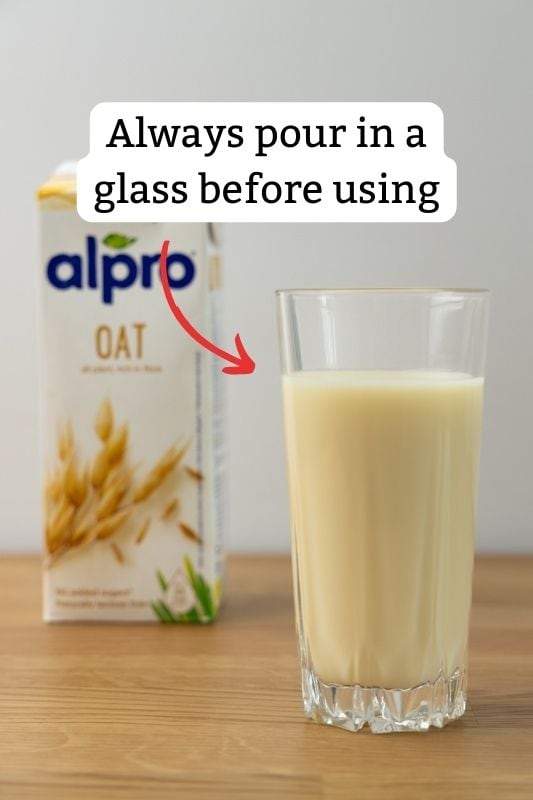
For me, I usually use my oat milk within 4 to 7 days of opening, just to be safe.
Homemade
If you’re making oat milk at home, always keep it in the fridge sealed tightly and use it within 3 to 4 days. If you make more than you could use within that period, freeze the leftovers.
(Store-bought oat milk stays fresh and safe longer because it’s pasteurized.)
Does Oat Milk Go Bad?
Oat milk stays fresh longer than regular dairy milk, but it goes bad eventually. If the carton is bloated, the liquid smells sour or moldy, is completely separated, or is visibly off-color, it’s time to toss it.
That’s the gist of it. Now, let’s cover the details.
How to Tell if Oat Milk Is Bad?
Here’s how you check if your oat milk is okay:
- Check how long it’s opened. If it’s more than two weeks, discard it no matter what.
- Sniff it. Open the carton or bottle and give it a whiff. If it smells moldy, off, or sour, discard it.
- Shake it and pour some in a glass.
- Check the consistency and color. There might be some minor changes, but nothing significant. If it’s slimy, completely separated, or anything else that’s odd, it has to go. Same thing if you notice any microbial growth or if the oat milk is discolored.
- Taste it. Assuming that everything is okay up until now, it’s time for the flavor test. Oat milk is supposed to be a bit nuttier than cow’s milk and with a hint of oats. Many brands also taste quite sweet, even if there aren’t any artificial sweeteners or sugar added. If it’s sour, it’s spoiled oat milk.
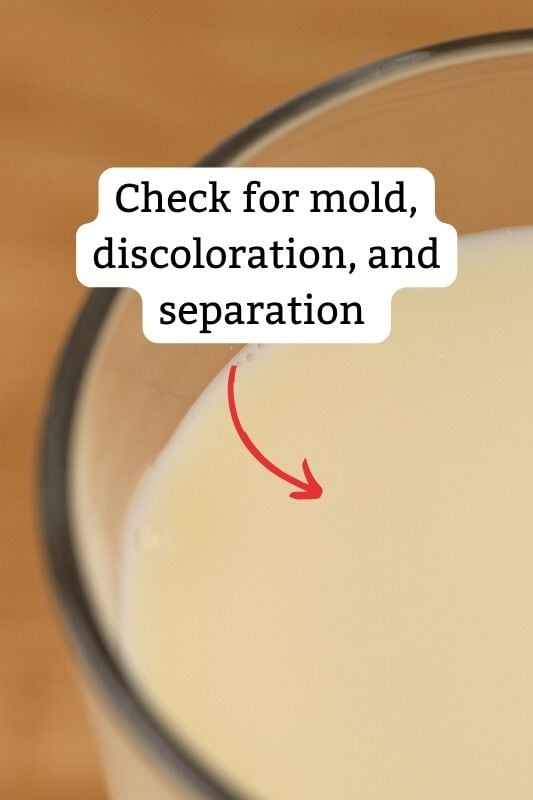
If your oat milk has passed every single test described above, chances are it’s fine to use.
Not sure? Better safe than sorry. Food poisoning is never fun.
Does Oat Milk Need to Be Refrigerated?
Shelf-stable oat milk can sit at room temperature until you open it. After opening, the leftovers require refrigeration. Refrigerated oat milk, on the other hand, requires refrigeration at all times.
In other words, you should store your oat milk the way it was in the grocery store and place it in the fridge once you open the carton or bottle.
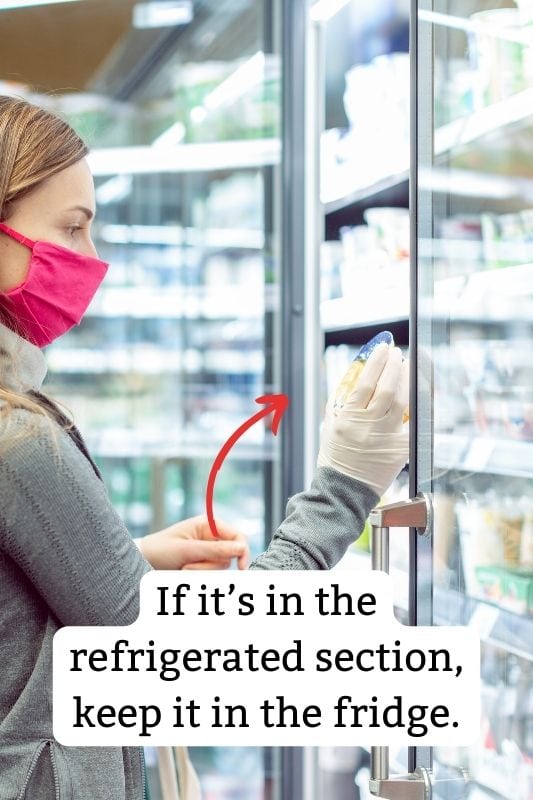
(It works the same way for regular milk and other dairy-free milk alternatives such as almond milk, soy milk, coconut milk, and rice milk.)
Wondering why some bottles or cartons of oat milk require constant refrigeration? Or if the shelf-stable ones are loaded with preservatives? Here’s the scoop.
Refrigerated vs. Shelf-Stable Oat Milk
The difference between shelf-stable and refrigerated oat milk is that the former is packaged in an aseptic format that keeps it safe without refrigeration. Both types of oat milk usually have the same ingredients and nutritional content, and the packaging is the only difference.
Here’s how Oatly brand explains it on their website:
The shelf-stable cartons are packaged in an aseptic format that produces a totally sterile environment, resulting in a product with a longer shelf life and no need for refrigeration (until it’s been opened for the first time, that is).
Oatly
That means you typically don’t have to worry about any crazy preservatives in the shelf-stable variety.
(Make sure to read the label, though.)
Some brands, like Califia Farms, try to make things a bit easier for their customers and use bottles for oat milk that requires refrigeration and cartons for the shelf-stable variety. But that’s not the norm.
If you’re using oat milk primarily as a coffee creamer, consider buying the Barista version of your favorite brand. It tastes a bit more like regular milk and usually steams and froths better.
Long story short, neither type is better than the other, but the shelf-stable variety is undoubtedly a better option if you want to stock up.
How Long Can Oat Milk Sit Out?
According to the USDA, you shouldn’t leave a half-open oat milk carton at room temperature for more than 2 hours. That’s the “2-hour rule” that applies to all perishable foods in practice.
If you ever decide to bend that rule, be reasonable. If that oat milk sits on the counter for 3 hours, it’s probably okay, but if you accidentally left it out overnight, it has to go.
Storage Practices
Besides keeping the carton in the right place, there are a few other basic oat milk storage practices to remember about.
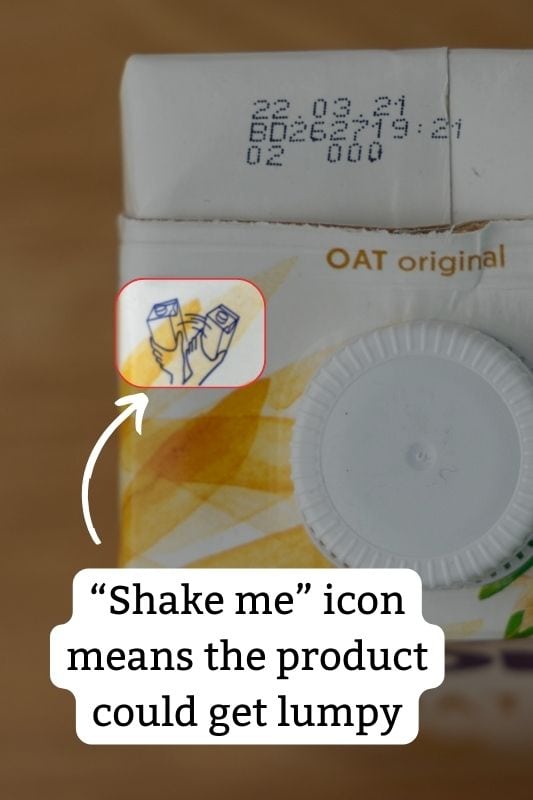
Those are:
- Always keep the carton sealed tight when not in use.
- Don’t drink straight from the carton.
- Pour as much oat milk as you need into a glass a put the carton back in the fridge right away.
- If your carton isn’t easily resealable, pour the leftovers into a resealable plastic container or a glass jar.
- Shake the bottle or carton before pouring.
Rotten Records: Share Your Snap!
Caught some food past its prime? Upload your photo to “Rotten Records” and help others spot the signs of spoilage. Every image makes our food community safer and more informed!
